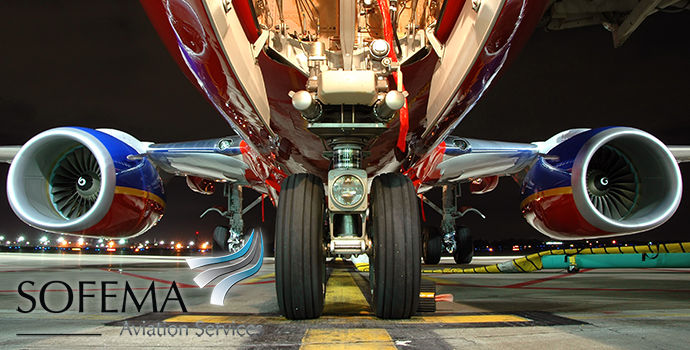Retraction and Extension Issues
Any unusual noise or slow movement of landing gear is an indicaton of a potential defect, defects may be “solid” or “intermittent”
One possible scenario could be related to the surface temperatures, when temperatures are low it is possible for frozen deposits to be present.
If the aircraft operating environment is characterised by high levels of dust or fine sand, then it is possible that the contamination could be caused by insufficient lubrication and contamination by sand and dust.
In both cased the re greasing the all landing gears could provide a solution to this issue.
Potential Impact on Other Aircraft Systems
Landing gear problems may involve disabling features that control the configuration of other systems, for example a proximity switch on a landing gear leg can signal whether a system should be in ground mode or air mode.
Landing with Gear in an Abnormal Position
Fuel will normally be either jettisoned or used down to safe reserves, to minimise fire risk and to reduce the approach speed.
There are potentially three ways to get landing gear down, the normal system, an alternate system and a freefall option, it is essential to try all of these before preparing to land with abnormal gear status i.e. with one or more legs indicating not locked down.
If the problem affects one set of main landing gear only, for some types it may be recommended to land with all the other main gear retracted. (For larger aircraft it is recommended to land on all available landing gear, because, it will absorb some of the aircraft’s energy and momentum and it is far better the impact is absorbed by the landing gear, than by the fuselage.)
Planned Flight with Landing Gear in the Down Position
Flight with the gear down is likely to involve limitations on both indicated airspeed and cruising altitude. Such a flight must only be undertaken in accordance with the procedures and limitations in the AFM or Operations Manual.
Performed typically in accordance with Configuration Deviation List (CDL) or in accordance with the Minimum Equipment List (MEL).
Case Study – DH8D, Aalborg Denmark, 2007:
On 9 September 2007 the crew of an SAS Bombardier DHC8-400 approaching Aalborg were unable to lock the right MLG down and prepared accordingly. During the subsequent landing, the unlocked gear leg collapsed, and the right engine propeller blades struck the runway.
Two detached completely and penetrated the passenger cabin injuring one passenger. The Investigation found that the gear malfunction had been caused by severe corrosion of a critical connection and noted that no scheduled maintenance task included appropriate inspection.
A Safety Recommendation to the EASA to review the design, certification and maintenance of the assembly involved was made.
Sofema Aviation Services offers EASA compliant regulatory training to cover Aircraft Landing Gear Engineering and Maintenance Management Considerations. For details please see www.sassofia.com or email office@sassofia.com




